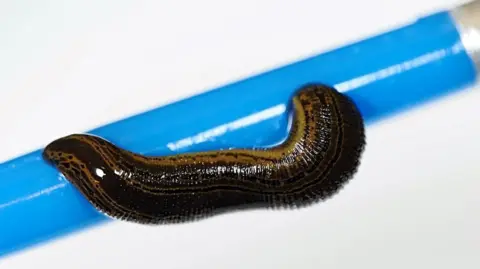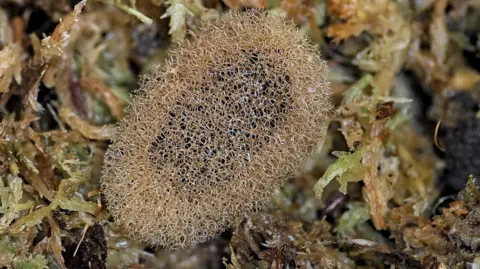Rare baby leeches hatch at Highland Wildlife Park
 RZSS
RZSSA project set up to boost Scotland's rare population of medicinal leeches has got its first babies.
Twenty have hatched in a captive-breeding programme at the Highland Wildlife Park at Kincraig, near Aviemore.
They are the offspring of leeches collected in Dumfries and Galloway, one of the few places in Scotland where the creatures are known to survive in the wild.
The leeches were once widespread but declined in numbers in the 18th and 19th centuries due to their use in medicine and loss of wetland habitats.
The Royal Zoological Society of Scotland (RZSS), which runs the wildlife park, said it was hoped captive-bred leeches could be released in suitable lochs in the future.
It is working with conservation charity Buglife on the project.
RZSS conservation programme manager Dr Helen Taylor said: "It's incredibly exciting to see these baby leeches hatching, which is much more than we were expecting at such an early stage in the project."
Buglife conservation director Craig Macadam added: "Medicinal leeches have an important place in our medical history but are now one of the rarest invertebrates in Scotland.
"The success of the rearing programme at the Highland Wildlife Park is key in securing a strong future for medicinal leeches here."
 RZSS
RZSSThe medicinal leech is the UK's largest leech species and can grow to up to 20cm (8in) long.
They have five pairs of eyes and a sucker containing three jaws and about 100 teeth.
The leeches feed on fish and frogs and can also attach themselves to deer, sheep and cattle when they enter water to drink.
They are a protected species in the UK and in Scotland they have only been recorded in parts of Dumfries and Galloway and Argyll and Islay in the Inner Hebrides.
In medicine they were used for bloodletting, a treatment involving the removal of blood in the belief it would cure ailments.
Farmed leeches are still used to help tackle blood clots and improve circulation. There is a medical leech farm in Wales.
